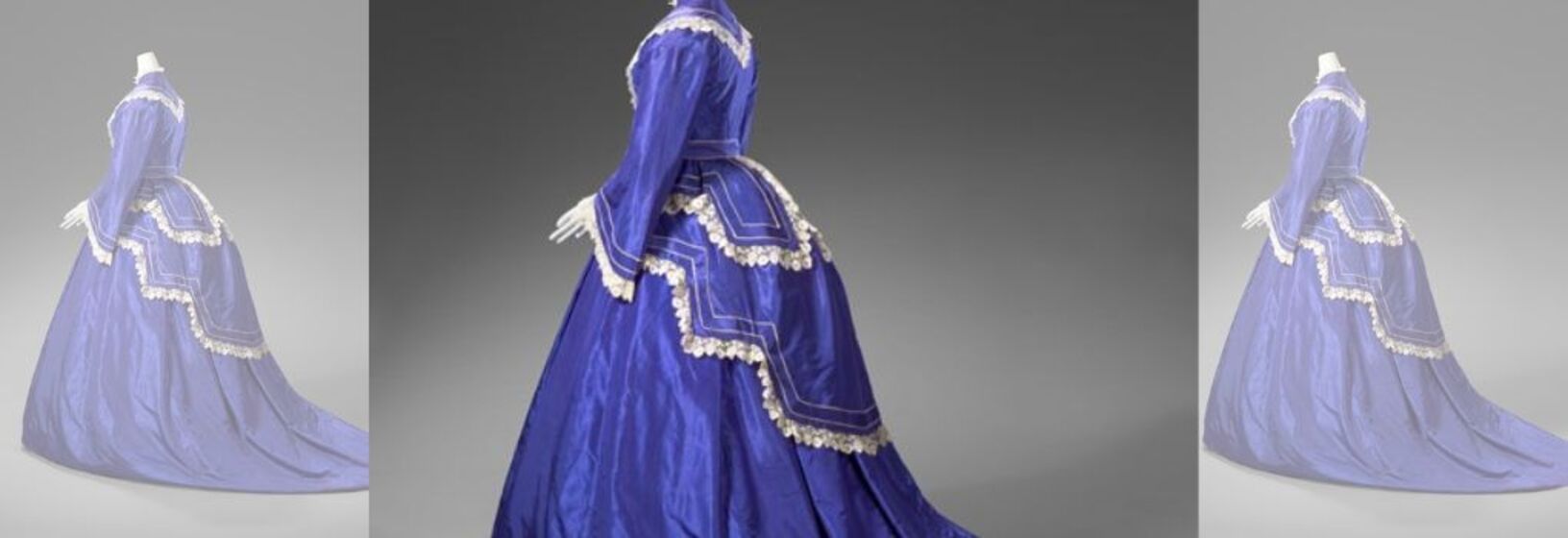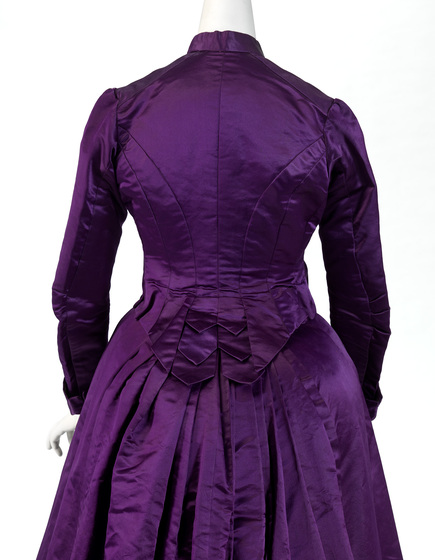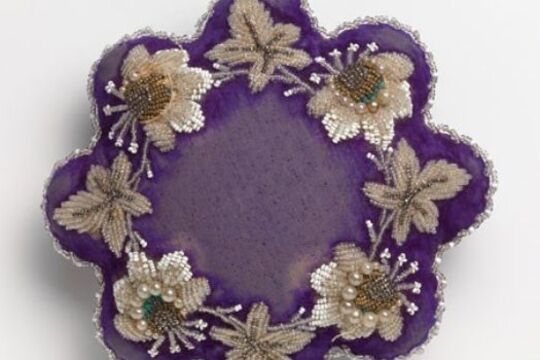Perkin’s Purple
Fashion today is based on a continuous cycle of new trends in which colour plays a key role. We often hear the mantra: ‘[Insert colour] is the new black’. Yet colour in fashion changed most radically in the nineteenth century, following the accidental discovery of aniline purple (later named mauveine) in 1856 by a young Scottish chemist, William Henry Perkin (1838–1907), while he was searching for a cure for malaria.
Perkin’s find was the catalyst for the emergence of a low-cost, artificial dyestuffs industry, which produced colours that rapidly replaced traditional dyes made from plants and insects. Within a decade, silk textiles saturated with the gaudy chemical hues of synthetic colours such as magenta, fuchsia, violet, aniline black, Bismark brown, methyl blue and malachite green were in widespread use.












